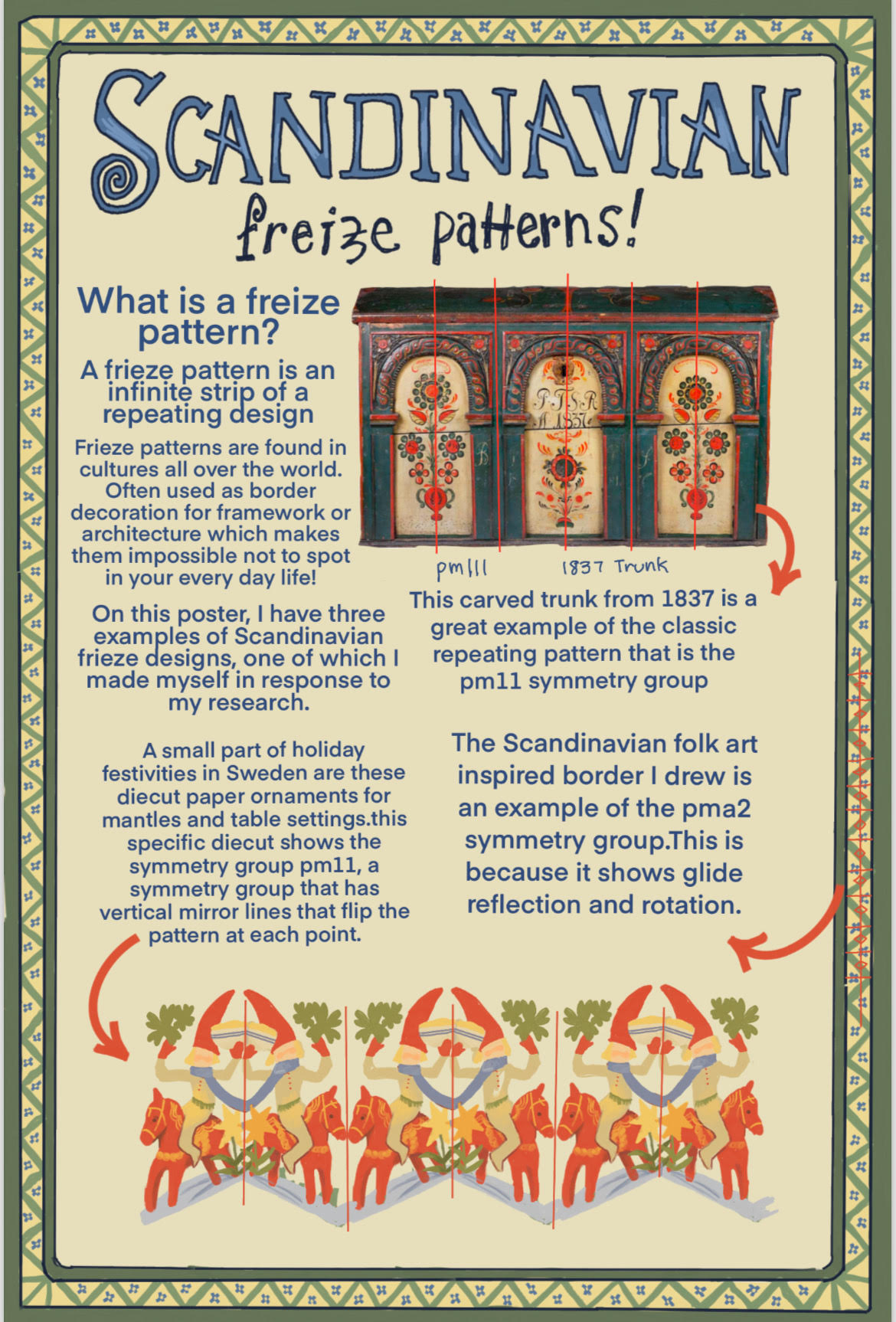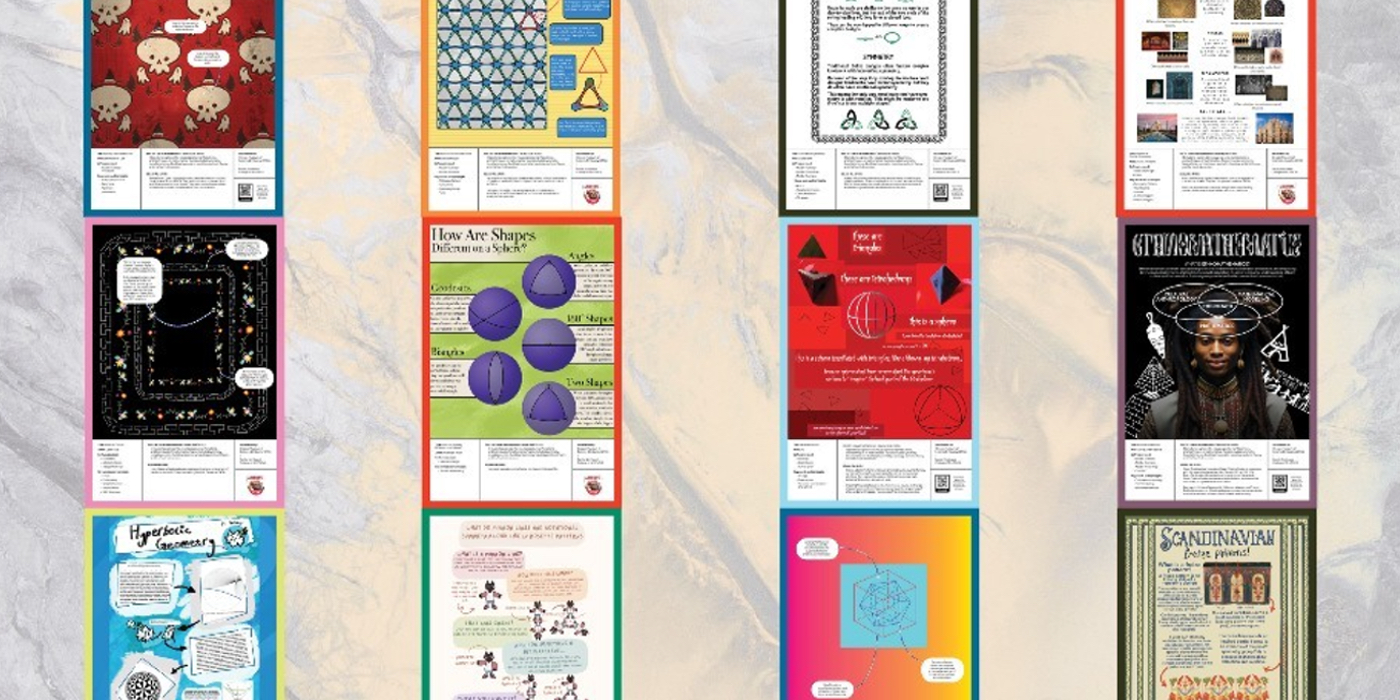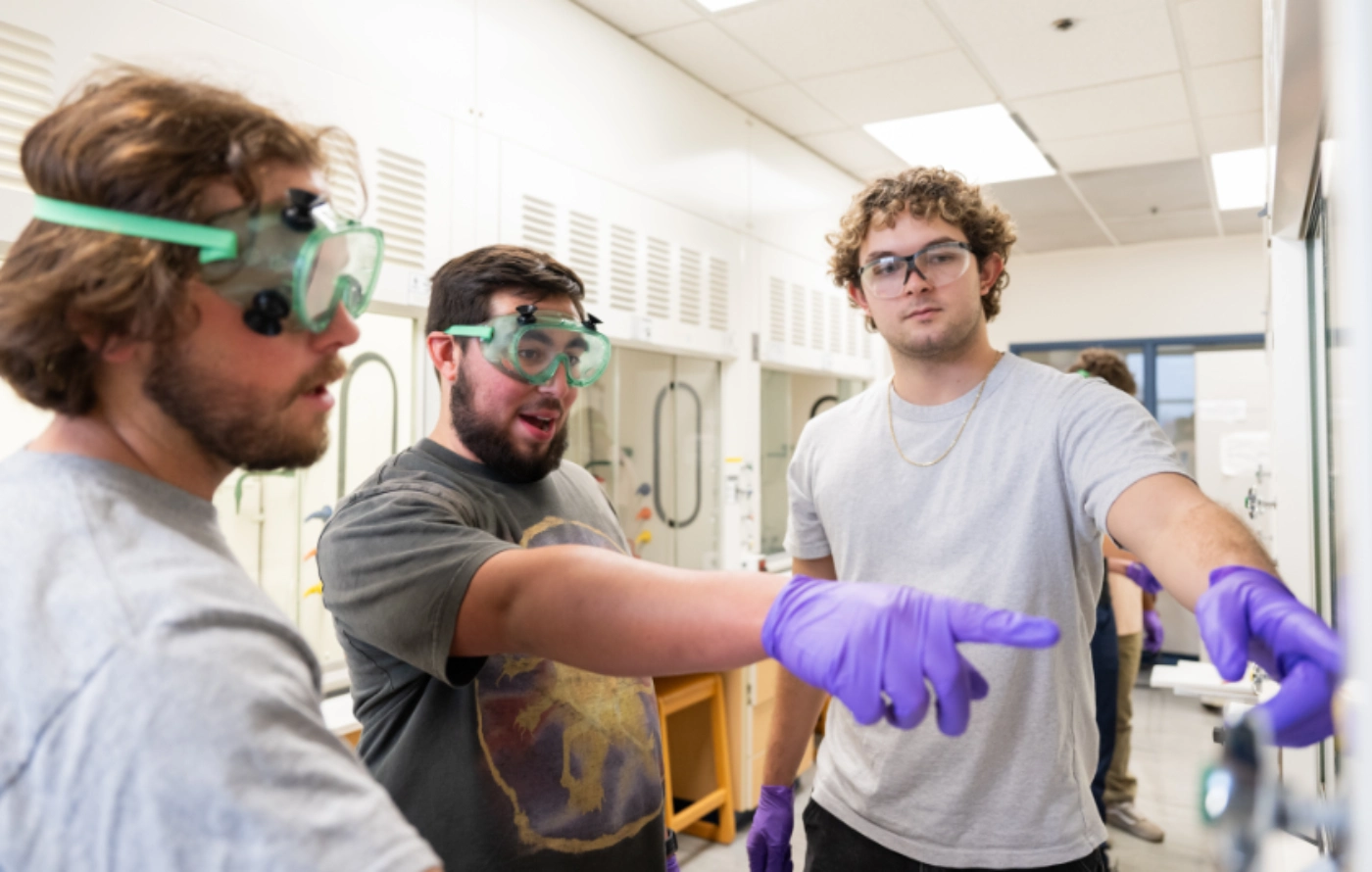Sixteen students in Assistant Professor of Art Kate McCallum’s Visual Mathematics class explored the intersection of art, mathematics, and science communication at an exhibit at the Oregon Museum of Science and Industry (OMSI) in Portland.
 A math class in an art school? Yes, says McCallum. “It’s a math class that’s really trying to shift things around and offer new ways into some of the topics. It’s a lot of visual reasoning and ways to connect them to creating aesthetic objects — to making beautiful things, basically,” she notes.
A math class in an art school? Yes, says McCallum. “It’s a math class that’s really trying to shift things around and offer new ways into some of the topics. It’s a lot of visual reasoning and ways to connect them to creating aesthetic objects — to making beautiful things, basically,” she notes.
The course examines how math can make sense of the world around us. “Once you start thinking about symmetry groups and tiling — they’re just everywhere, and students say that they can’t walk around anywhere without seeing this now,” McCallum adds. Students studied tessellations, non-Euclidean geometry, topology and knot theory, and the fourth dimension.
OMSI’s Talent Development and Inclusion Strategist and PNCA instructor Miguel Rodriguez MFA’23 was crucial in getting the project going and currently teaches a variation of the original course. His course adds the concepts of creative coding, space activation, and placemaking to increase students’ understanding of math and art in their creative practices.
“Not only is this an opportunity for exposure to a new audience but it’s one where they have to carefully consider the topic, context, and materiality of the final product,” Rodriguez says. “This is a great asset to include in their portfolios.”
Many students included areas of interest from their cultural background to their final projects. Students focused on Celtic knots, Mexican frieze patterns, and Islamic and Gothic traditions. “It's impressive to see how students can tackle the same topic but have vastly different artistic and creative interpretations,” Rodriguez says.
Even students who may have struggled with math in the past found the class fascinating. “I was pleasantly surprised by Kate’s class and how much fun I had exploring geometric patterns and phenomenon,” says Violet Stephens BFA’27, whose work centered on Scandinavian frieze patterns.
“I’m someone who can get a little anxious with math,” Stephens says. “But Kate’s class helped me feel more confident in my geometry skills and challenged me to be more visually observant.”
The class’s collaboration with OMSI reflects PNCA’s dedication to preparing students for professional practice. “We want students to have that experience connecting with the community and producing something in a professional way for a public space,” McCallum adds.



